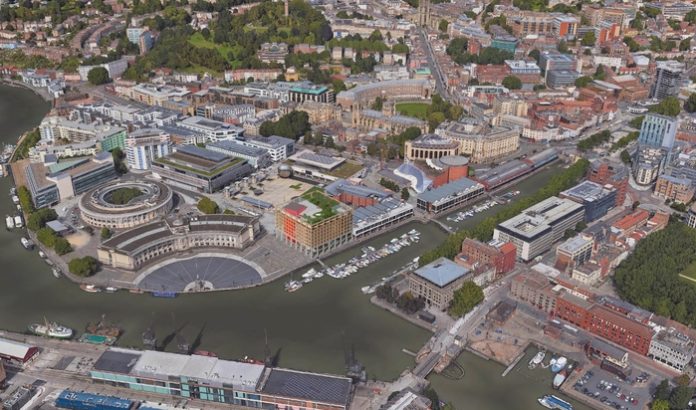As the window closed yesterday (25th September) for comments on Bristol City Council’s draft planning guidance for higher density urban developments, one of the city’s leading architects called for bold decision-making.
Yuli Cadney-Toh, architect director in international architectural firm BDP’s Bristol studio says the Council must support innovative ways of increasing urban density whilst reassuring the public that this is a chance to improve the quality of Bristol’s public realm.
The region’s Joint Spatial Plan identifies the need for 105,000 new homes by 2036. As things stand, the majority of these will be outside Bristol in Bath & North East Somerset, South Gloucestershire and North Somerset – outside the economic centres and away from jobs, increasing our reliance on transport and placing more strain on infrastructure and families.
With suitable land in high demand, Yuli advocates that ‘building up is better than building out.’
Bristol has few large development sites within the city and to date activity has focussed on small infill and suburban sites to bring forward homes and economic space. Whilst this delivers some high quality architecture and reuses brownfield land, Yuli argues that the time has come to make bold use of the remaining good brownfield sites and that building at height must be part of the debate to deliver a range of homes which attract and retain Bristol’s young mobile workforce.
By integrating tall buildings into mixed-density masterplans they will support a vibrant street life, businesses and generous public realm, creating healthy and sustainable communities.
Yuli argues increasing the density of development will not only help meet Bristol’s commitment to deliver 33,500 new homes, but offers opportunities to vastly improve the diversity and prosperity of the city.
Speaking on the last day for comments on the final version of the Urban Living Supplementary Planning Document (SPD), Yuli Cadney-Toh, architect director says:
“Bristol must have a plan which supports development and unites the city in its vision for the future. A joined-up approach to planning, transportation, infrastructure and development will bring investment, jobs and homes.
“Things can, and should, be looking up. Buildings of height offer unparalleled opportunity for sustainability – from energy efficiency and shared community energy provision to transport infrastructure and cutting road traffic.
“As campaigners stoke fears about an army of tall buildings overshadowing our attractive, heritage-rich city, there is a risk that they themselves will overshadow the debate.
“No-one is advocating the return of identikit tower-blocks of low grade homes which the 60s and 70s gave rise to. Half a century later, building at height and density now delivers economies of scale that can help free up open space and increase vitality and diversity. It can foster truly mixed use in a way that brings jobs within reach of communities, and communities within reach of each other and all that our vibrant buzzing city has to offer.
“But it’s also about location; St Phillips Marsh, which has been crying out for investment and development for decades, is an ideal location for sustainable, innovative buildings that transform the city’s gateway. With plans for a state of the art university campus at Temple Quay now firmly on the horizon, including buildings of height, this area can be the catalyst for a truly modern, mixed urban landscape offering everything we need in one place – homes, business premises, public space, shopping, eating and leisure options alongside education, employment, healthcare and community facilities.
“This is not a time to protest, but instead a time for working together. The people and the council must combine their energies, be brave, and together shape a vision for the future of our city”.





















